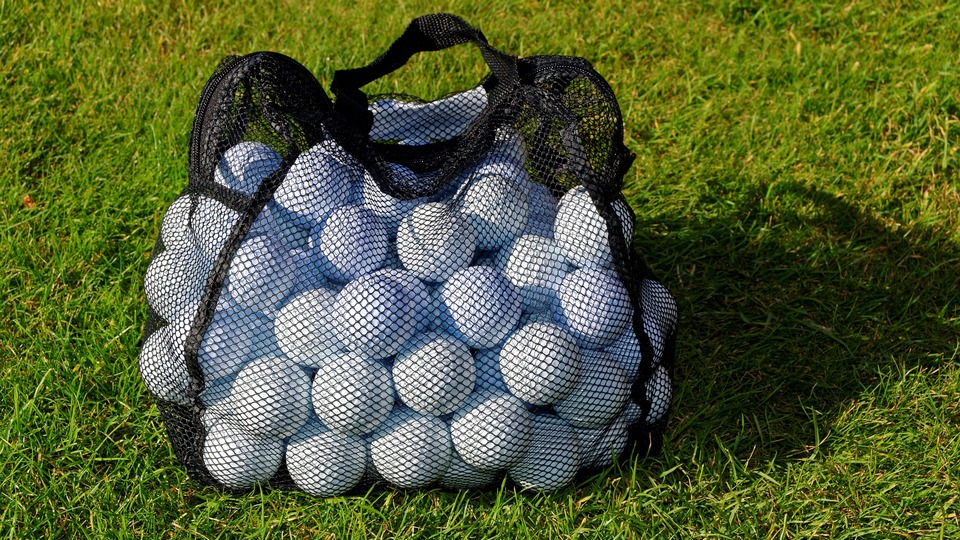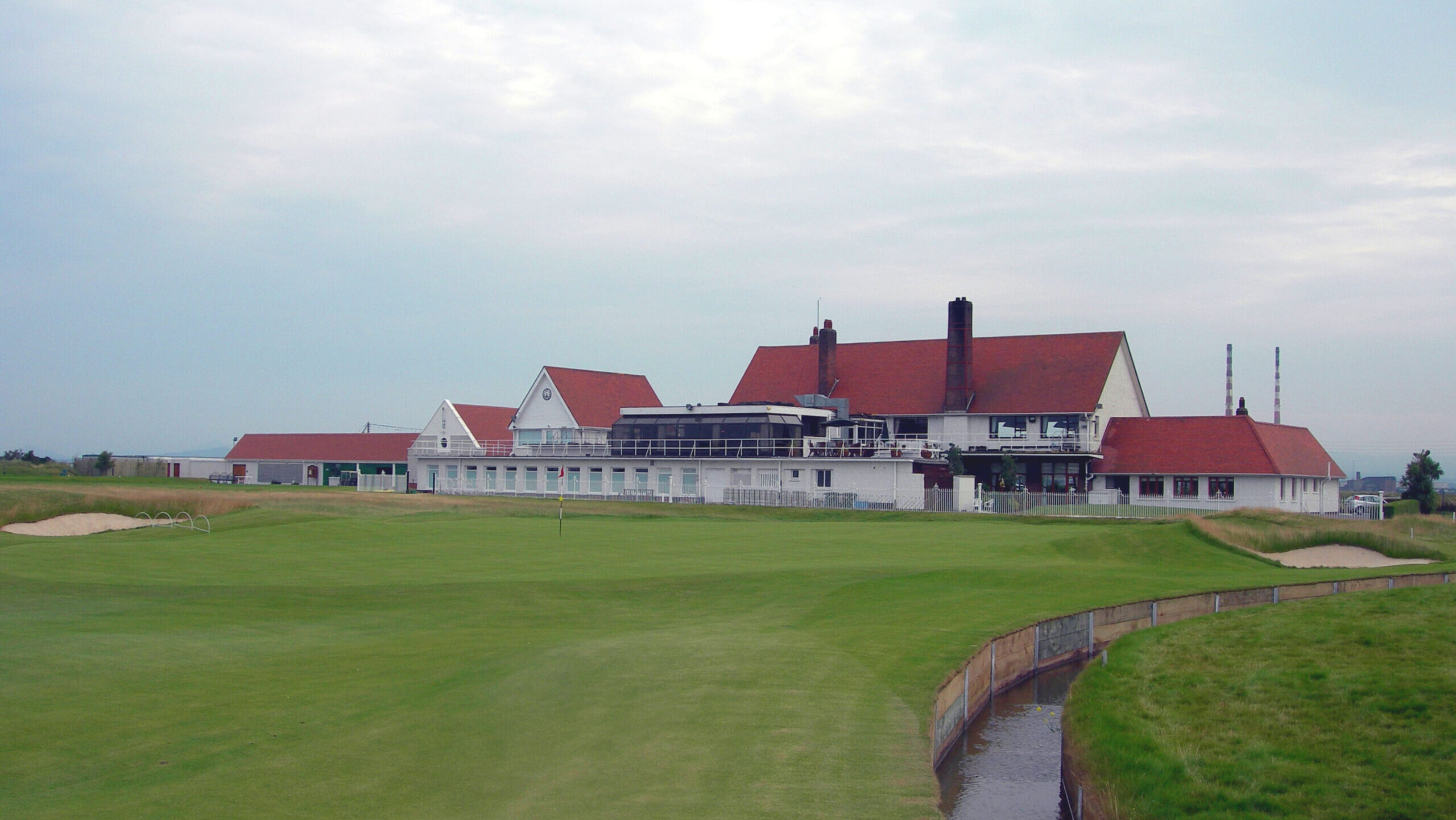It’s very easy to get overwhelmed by the sheer quantity and selection of golf balls available. Luckily, our golf ball experts can give you the best tips on how to choose the right golf ball that matches your golf skills. Our extensive golf ball guide will help you understand the technology behind golf balls and how to pick the one that improves your game.
What are golf balls made of?
Think of golf balls like cars. The core is the engine that propels the golf ball where you send it — without it, the ball is just going to flop a few feet in front of you. And the cover is like the electronics that make the ride smoother and more targeted.
With that analogy in mind and without going into too many technical details, let’s look at what golf balls are made of.
The core
The core of a golf ball is made of synthetic rubber or a combination of rubber-like materials. The main purpose of the core is to store and release energy during impact, which is how the ball travels long distances.
There are several types of cores for golf balls.
Single Core
Most two-piece golf balls have a single solid core. This core maximizes distance and durability and is ideal for beginners and high handicap players. The solid core is usually made from a blend of polybutadiene and other proprietary materials to optimize energy transfer. Golf beginners simply want the ball to go as far as possible, and single-core balls do just that.
Dual or Multi-Core
More advanced golf balls, such as three-, four-, or five-piece balls, feature dual- or multi-core designs. These designs incorporate layers of varying firmness to boost performance characteristics like distance, spin, and control. The innermost core is softer to maximize energy transfer, while the outer layers are firmer to provide increased control and reduce the spin of the driver. As you develop your skills, you will likely switch to multi-core balls because you have more finesse in your game. Distance is not so much of an issue as much as control.
The cover
The cover of a golf ball gives it its unique feel and control. Covers are made from one of two materials: Surlyn or urethane:
Surlyn
A type of ionomer resin, Surlyn is a durable material commonly used in two-piece golf balls. It offers excellent distance and durability but less feel and spin control than urethane covers. Casual golfers prefer Surlyn for its resilience and affordability.
Urethane
Urethane covers are softer and more pliable. They provide a better feel and increased spin control, especially around the greens. This material is used in the higher-end, multi-layer golf balls often preferred by advanced players. Urethane covers allow for better shot-stopping ability on the greens and improved workability.
The dimples
You might think that dimples are decorative, but nothing could be further from the truth, as they determine how the golf ball travels through the air and reaches its destination. Dimples are important in the aerodynamics of a golf ball: they reduce air resistance (drag) and improve lift, so that the ball travels further and more accurately.
Better lift
As a golf ball moves through the air, the dimples create a thin layer of turbulent air that clings to the ball’s surface. This turbulence reduces the wake behind the ball, helps it to cut through the air more efficiently, and generates lift. The lift effect is like how airplane wings generate lift and it helps the ball achieve a higher trajectory.
Less drag
Dimples also minimize drag as they reduce the low-pressure zone behind the ball, which would otherwise slow it down. This reduction lets the ball maintain velocity and travel further.
Dimple design
Unsurprisingly, there is a whole art to the design of dimples on golf balls. The number, size, shape, and pattern of dimples vary between golf ball models and influence their performance.
Manufacturers experiment with dimple designs to reach the best performance possible. For example, a ball with shallower dimples might fly lower and run more upon landing, while deeper dimples can increase lift for higher trajectories.
The average golf ball has 300 to 500 dimples, with varying diameters and depths, so you can imagine the precision that’s gone into its design!
What is golf ball compression and feel?
Let’s now move on to the next level of golf ball technology and discuss compression.
Compression refers to the amount a golf ball deforms upon impact. A lower-compression ball compresses more, making it softer. A higher-compression ball deforms less and delivers a firmer feel. The compression you choose should correlate with your swing speed.
Compression is measured from 0 to 200, with most golf balls falling between 30 and 120. Lower-compression balls deform more easily, while higher-compression balls are firmer and deform less.
Compression affects the energy transfer between the clubhead and the ball. When the ball compresses correctly, it stores and releases energy and reaches the optimal distance and performance.
Swing speed considerations
Golfers with slower swing speeds (below 85 mph) often prefer low-compression balls (below 70), as they require less force to compress the ball and achieve distance. These balls provide a softer feel, which many players find helpful in their short game.
Players with faster swing speeds (above 105 mph) prefer high-compression balls (90 and above) for better control and accuracy, as they can harness the ball’s firm feel for maximum distance.
Spin and control
You will often hear talk of spin.
Low-spin balls reduce side spin, which can help keep shots straighter. They are ideal for beginners and those struggling with slices or hooks. These balls also tend to roll further on the ground, which adds extra distance exactly when you need it most, especially off the tee.
High-spin balls increase backspin and allow for better control, particularly with approach shots and around the greens. They stop quickly on the green, which is what you need if your shot relies on precision. When you want absolute control with your club, you want to control where your ball lands and what’s where high-spin matters.
How to choose the right golf ball for your swing speed
Another factor you should consider when choosing the right golf ball for you is your swing speed.
Low swing speed
- Swing Speed Range: Typically under 85 mph.
- Recommended Compression: Lower compression (30-70).
Do you have a low swing speed? In that case, you will make the most of low-compression balls because they compress more easily. This deformation maximizes energy transfer even with a less powerful swing, which means the ball travels longer distances. The softer feel of low-compression balls also improves control around the greens.
Medium swing speed
- Swing Speed Range: Between 85 mph and 105 mph.
- Recommended Compression: Medium compression (70-90).
Golfers with medium swing speeds have more flexibility when it comes to compression. Medium-compression balls provide a balance between distance and control. They deliver a firmer feel without sacrificing too much of the soft touch needed for short-game precision when the final shot is make or break time.
High swing speed
- Swing Speed Range: Over 105 mph.
- Recommended Compression: Higher compression (90-120).
Do you like to whack the ball into the next field? Players with high swing speeds generate more force, so they need high-compression balls to generate maximum energy transfer. These balls provide better control and accuracy for powerful swings. They help skilled players shape shots and aim with precision where they want their golf ball to land.
Matching golf experience with the right ball
By now, we have covered compression, swing, core, cover, spin, dimples, and everything that makes a good golf ball. But how do you know which one is best for your game?
Beginners
- Skill Level: Novice golfers with developing swing mechanics.
- Typical Swing Speed: Often slower, generally below 85 mph.
- Priorities: Distance, forgiveness, and durability.
If you’re wondering, “How to choose a golf ball for beginners?” we suggest choosing two-piece construction, low-compression balls.
Two-piece construction, which consists of a solid rubber core and a durable cover, is usually made of Surlyn. This type of ball delivers maximum distance and durability. The simple construction reduces spin and helps beginners keep their shots straighter and minimize slices and hooks. These forgiving balls are firmer, which may sacrifice some feel and spin around the greens, but the added distance and forgiveness make them ideal for those still mastering the basics of golf.
As for compression, low-compression golf balls have soft cores that compress easily upon impact. Because beginners’ swing is slow, they need to maximize the distance and require a softer feel. Once they build up their confidence, they can develop their game.
Examples: Callaway Supersoft, Titleist TruFeel, and Srixon Soft Feel.
Intermediate golfers
- Skill Level: Players with more consistent swing mechanics who have developed some control over their shots.
- Typical Swing Speed: Medium, usually between 85 mph and 105 mph.
- Priorities: Balance between distance, control, and feel.
People often ask, “I am an intermediate golfer, what golf ball should I use?” Our suggestion? Three-piece construction and medium compression balls.
Three-piece cores have an additional layer or mantle between the core and the cover. The cover is often made from materials like urethane or soft ionomer. They deliver a balance between distance and spin control. The mantle layer helps reduce driver spin for distance and still boosts spin with wedges for better control around the greens.
Medium-compression balls deliver moderate firmness for a blend of distance and feel. Golfers have better control but without sacrificing distance. These balls are great for players working on improving shot shaping and precision.
Examples: Titleist Tour Soft, Bridgestone e6, and TaylorMade Tour Response.
Expert golfers
- Skill Level: Skilled players with well-refined swing mechanics, capable of shaping shots and managing course conditions.
- Typical Swing Speed: Higher, generally over 105 mph.
- Priorities: Control, feel, and spin.
Some lucky golfers have practised their game to perfection. They may ask, “I am an expert golfer, which golf ball is best for me?” Well, the best balls for expert golfers have multi-layer construction and high compression.
The multi-layer golf balls have several layers surrounding the core, usually with a soft urethane cover. The many layers provide maximum control and feel, especially with short irons and wedges. These balls generate high spin rates for stopping power on the greens and greater shot workability.
As for high-compression golf balls, their firmer cores require higher swing speeds to compress fully. They deliver precise control and responsiveness. Experts can use these advanced spin characteristics to their advantage and shape shots and optimize their performance.
Examples: Titleist Pro V1 and Pro V1x, Callaway Chrome Soft X, and TaylorMade TP5.
Environmental factors
Where and when you play also affects the type of golf ball that best suits you.
In colder weather, a softer, low-compression ball can help maintain distance, as the ball tends to harden in lower temperatures. The opposite is true in hot conditions, where a firmer ball might offer better performance.
Course conditions are also important. On a soft course, a high-spin ball can help control shots into greens, while on a hard course, a low-spin ball might provide added distance and roll.
Price and brand loyalty
Finally, price matters. Premium balls offer advanced features and performance but come at a higher cost, so you need to balance your budget with your performance needs.
Many mid-range balls provide excellent performance for their price and are a popular choice among amateur golfers.
However, if you want the best of both worlds — excellent quality and the best prices — you could buy used golf balls from Lost Golf Balls. You get the same golf ball performance at 50-80% off retail prices, so you can easily try shots and practice without thinking about the cost of the balls.
Trial and error
So, “What is the best golf ball for me?” you may ask. We hope the above guide has helped you make a choice, but ultimately the best way to choose the right golf ball is through trial and error. Depending on your golfing practice, get golf balls from different brands and try them out.
Test different models on the course and at the driving range to understand how each ball performs with your swing, and how it feels for your level of expertise. Consider using launch monitors to analyse your ball’s performance metrics, such as launch angle, spin rate, and distance. As you grow your golfing, you will find the right ball for your game. In the meantime, keep practising and happy putting!



